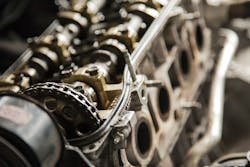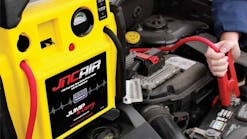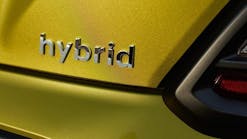Guest blog: Should I reuse my exhaust manifold?
There are many reasons somebody may opt for a new exhaust manifold on their vehicle. Usually, it’s to increase exhaust flow and hence increase their engine performance with an aftermarket manifold. Other times, it’s after the OEM manifold has caused mounting bolts to break. With the latter, you might consider whether to replace it with a brand-new manifold.
Here are a few points to consider when making that decision:
1. What are the differences between OEM and aftermarket exhaust manifolds?
OEM exhaust manifolds
OEM exhaust manifolds are manufactured with cost in mind and to meet a broad spectrum of users’ performance needs. They are not built to deliver the highest level of horsepower and unfortunately are prone to cracking, warping, and broken manifold bolts. Most OEM exhaust manifolds are formed from the factory using fine grain cast iron, and like most metals, it expands and contracts during duty cycles of heating and cooling.
Pros:
- Low cost
- Readily available
Cons:
- Do not deliver peak vehicle performance capabilities
- Made of unseasoned cast metal, leaving them prone to warping
Aftermarket exhaust manifolds
These aftermarket options can come in cast, ceramic-coated, stainless, or longer-in-length headers.
Pros:
- Can increase horsepower and improve performance
- May increase the engine noise (could be a pro or con…)
Cons:
- Can be expensive
- May disrupt the performance of your vehicle if not calibrated correctly
- Requires alterations to the exhaust system
2. Why do warping and breakage occur with exhaust manifolds?
This happens naturally, and at first, the manifold and mounting studs are in a state of “elastic deformation.” Elastic deformation is basically expansion and contraction over a period of time retaining the original size and shape. Each duty cycle will provide tension stress on the studs or bolts that hold the manifold in place. The mounting hardware exhibits flexibility over time. However, as the manifold continues to expand and contract more dimensionally, each consecutive time creates larger and larger tension forces that move beyond the elastic state of deformation and become what is referred to as “plastic deformation.” Basically, the manifold stretches beyond return and fractures the mounting stud, leaving the manifold permanently deformed and dimensionally changed. This expansion and stretching of the manifold bolts over numerous duty cycles eventually cause too much tension on the bolt(s), stretching them beyond capacity and causing them to fail.
3. Should I replace my exhaust manifold?
The most productive solution is always driven by the application. If you are seeking a boost in power and efficiency, aftermarket exhaust solutions (headers) mentioned earlier in this article might be the answer. If you are simply contemplating an exhaust manifold bolt repair, your dealer/service center can replace it with a new factory OEM replacement manifold.
We highly recommend OEM replacement manifolds that can be procured from your authorized dealer. Aftermarket replacement cast iron manifolds are available and at first glance, may appear more economical. However, depending on your application (trailer towing, loading, snow plowing, heavy usage ...) and frequency of duty cycles, the need to replace them will accelerate within your ownership timeline. If that occurs, it will quickly erase any economic advantage you would expect, making your best option to be to buy OEM right from the start. When you choose an OEM manifold, you, your dealer, or service center, can rely on exact fitment and emissions output.
There is another option that this is economically comparable to offshore replacement manifolds and will actually outperform a replacement. Your dealer/service center may offer a service to have your old manifolds resurfaced rather than purchasing new. This can be preferable because the cast iron has already been seasoned (expanding and contracting through cycles). This option will restore your vehicle's stock performance characteristics and meet local emissions standards, as well as provide the benefit of a significantly longer-lasting repair than the aftermarket/offshore option.
In addition, we recommend replacing all of the bolts with OEM mounting bolts or studs. When you replace the manifold with a new one, it will be prone to the same warping that broke the bolt originally – so at the very least, be sure to replace all of the bolts with OEM mounting bolts or studs.
Information provided by ProMAXX



